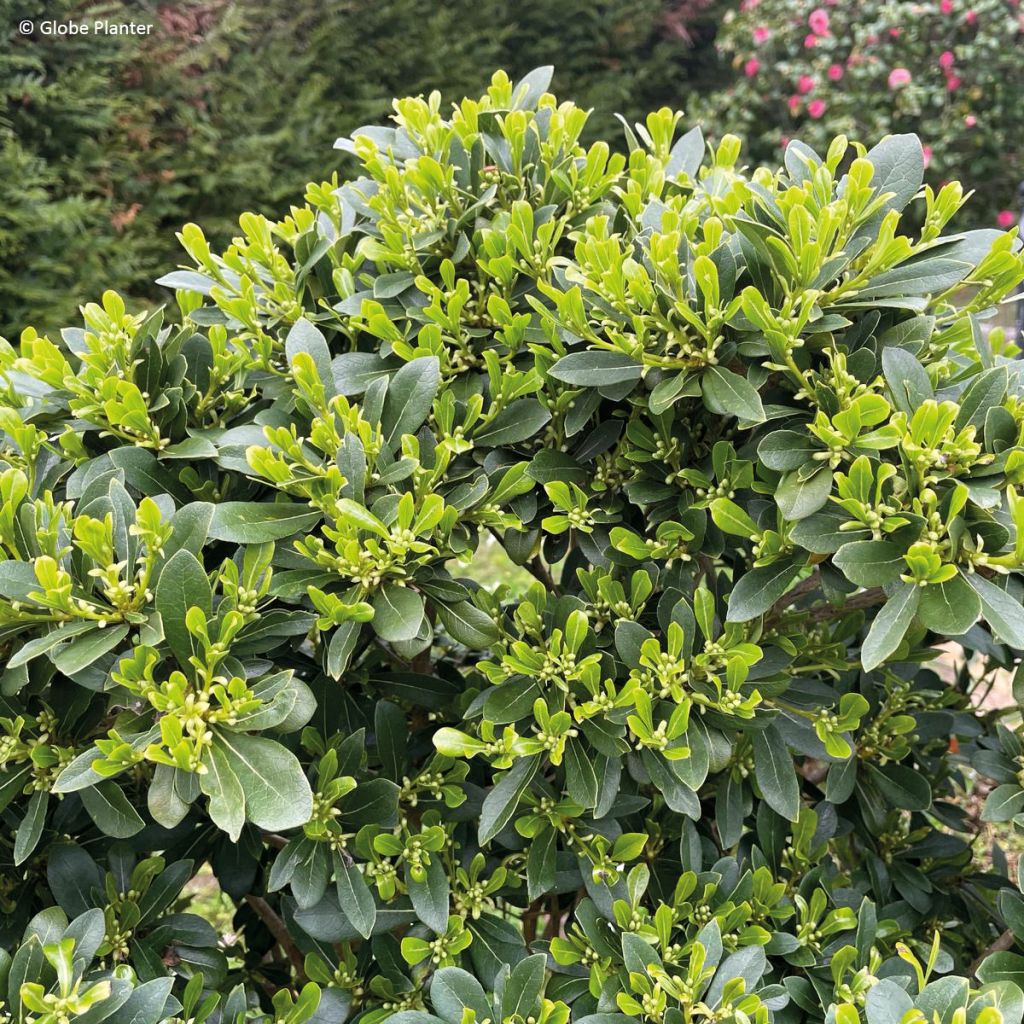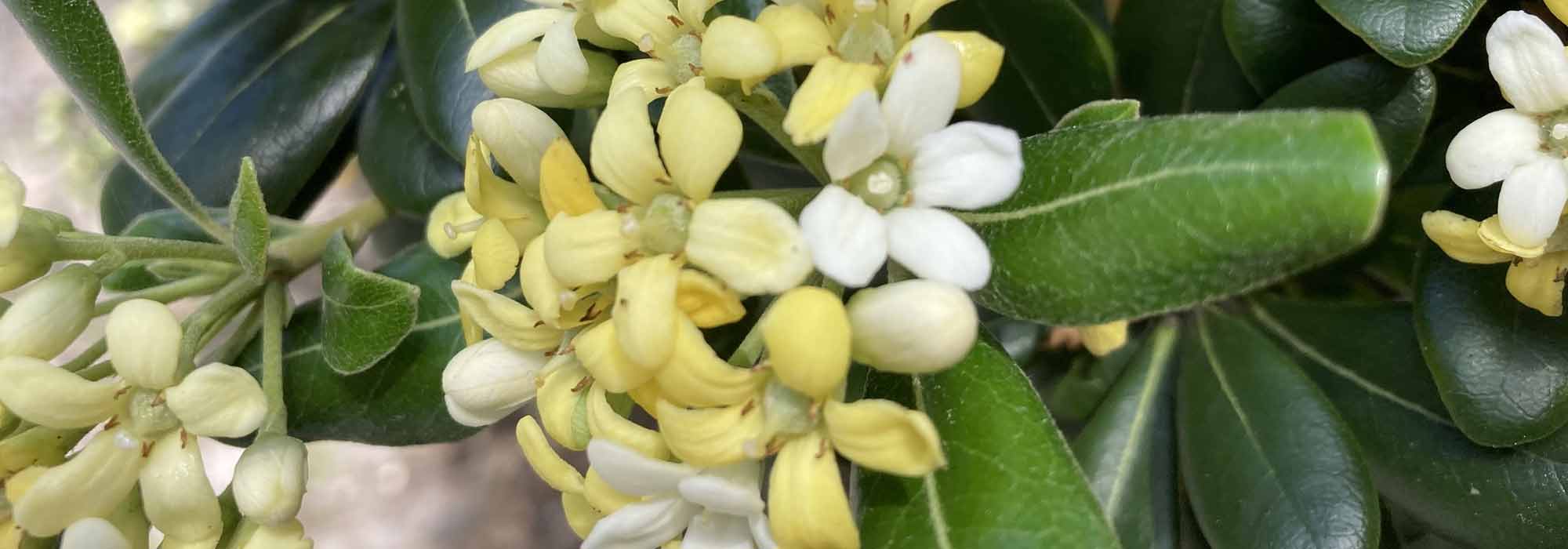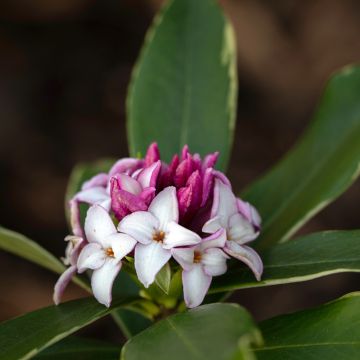

Pittosporum tobira x heterophyllum Green Mound - Japanese pittosporum


Pittosporum tobira x heterophyllum Green Mound - Japanese pittosporum


Pittosporum tobira x heterophyllum Green Mound - Japanese pittosporum
Pittosporum tobira x heterophyllum Green Mound - Japanese pittosporum
Pittosporum tobira x heterophyllum 'Jule1' Green Mound
Japanese Pittosporum, Australian laurel
Special offer!
Receive a €20 voucher for any order over €90 (excluding delivery costs, credit notes, and plastic-free options)!
1- Add your favorite plants to your cart.
2- Once you have reached €90, confirm your order (you can even choose the delivery date!).
3- As soon as your order is shipped, you will receive an email containing your voucher code, valid for 3 months (90 days).
Your voucher is unique and can only be used once, for any order with a minimum value of €20, excluding delivery costs.
Can be combined with other current offers, non-divisible and non-refundable.
Home or relay delivery (depending on size and destination)
Schedule delivery date,
and select date in basket
This plant carries a 24 months recovery warranty
More information
We guarantee the quality of our plants for a full growing cycle, and will replace at our expense any plant that fails to recover under normal climatic and planting conditions.
Would this plant suit my garden?
Set up your Plantfit profile →
Description
Pittosporum 'Green Mound' is a hardy evergreen bush with a compact, rounded habit, forming a dense, regular cushion of bright green foliage. Particularly floriferous, it becomes covered in spring with small, intensely fragrant white flowers, turning creamy yellow as they fade. Resistant to heat and drought, and fairly hardy, it adapts to many situations and offers a beautiful alternative to Pittosporum tobira 'Nana', in regions more exposed to cold. It is adorable in the ground and in pots, as a low hedge, in topiary, or even trained as a standard to enhance a terrace.
Pittosporum 'Green Mound' is a hybrid resulting from the cross-breeding of Pittosporum tobira and P. heterophyllum, developed by the French breeder Frédéric Julien. This cultivar combines the robustness of the former with the increased hardiness of the latter.
Pittosporum 'Green Mound' is characterised by a naturally compact and rounded habit; it forms a regular mound of bright, glossy green foliage. The bush reaches 1 m to 1.50 m in all directions in the ground. In a pot, its dimensions are slightly reduced, around 0.8 to 1 m in height and spread, depending on growing conditions. Its growth is moderately fast, and it can easily be pruned to control its development. Its alternate, obovate to elliptical leaves measure 3 to 5 cm long by 1.5 to 3 cm wide. They are thick, leathery, with an entire margin that is slightly rolled under. Their upper surface is a glossy green. This foliage is evergreen in winter. Flowering occurs from April to May, and it is much more abundant than that of its two parents. It takes the form of rounded terminal clusters composed of small white flowers, 1 to 2 cm in diameter, emitting a fragrance reminiscent of orange blossom. These flowers turn creamy yellow towards the end of the flowering period. Pittosporum 'Green Mound' does not produce fruit. This hybrid is sterile, meaning it forms neither capsules nor viable seeds. The bush thrives in sun or partial shade and adapts to a wide range of well-drained soils. It tolerates summer drought once established, but benefits from regular watering during heatwaves. Its hardiness is rated at -12/-13°C.
Pittosporum 'Green Mound' is appreciated for its versatility in landscape design. It can be used as a low hedge, in a border, or in a large pot on a terrace. Its dense foliage and large cushion-like appearance provide structure to plant compositions. In contemporary or Mediterranean-inspired gardens, it pairs well with purple or silver foliage such as that of Loropetalum chinense 'Black Pearl' and Artemisia 'Powis Castle'. It also works wonderfully in more classic settings alongside boxwood balls, Lonicera nitida 'Maigrün', or dwarf conifers. It is very decorative in topiary as it can be pruned into a ball or a short lollipop to accentuate its structural effect, or even trained as a standard to create volume on a terrace. This bush, which can withstand severe pruning if necessary, lends itself to multiple uses.
Tips: Apply a good organic fertiliser each year for better flowering. In a pot, pruning is almost unnecessary.
Pittosporum tobira x heterophyllum Green Mound - Japanese pittosporum in pictures


Plant habit
Flowering
Foliage
Botanical data
Pittosporum
tobira x heterophyllum
'Jule1' Green Mound
Pittosporaceae
Japanese Pittosporum, Australian laurel
Cultivar or hybrid
Planting and care
Plant Pittosporum 'Green Mound' in spring in areas at the limit of its hardiness, and in early autumn in mild or warm and dry climates. It should be planted in fertile, well-drained, deep soil. It is relatively hardy (-10 to -13°C); choose a location in full sun or partial shade, sheltered from prevailing winds. Mulch the base immediately. Once well-rooted, it tolerates dry summers fairly well. Position it along a south-facing wall in regions with harsh winters. In cooler climates, cover it with winter fleece or shelter it in a frost-free conservatory for winter. Apply a good organic fertiliser each year for better flowering.
Planting period
Intended location
Care
Planting & care advice
This item has not been reviewed yet - be the first to leave a review about it.
Similar products
Haven't found what you were looking for?
Hardiness is the lowest winter temperature a plant can endure without suffering serious damage or even dying. However, hardiness is affected by location (a sheltered area, such as a patio), protection (winter cover) and soil type (hardiness is improved by well-drained soil).

Photo Sharing Terms & Conditions
In order to encourage gardeners to interact and share their experiences, Promesse de fleurs offers various media enabling content to be uploaded onto its Site - in particular via the ‘Photo sharing’ module.
The User agrees to refrain from:
- Posting any content that is illegal, prejudicial, insulting, racist, inciteful to hatred, revisionist, contrary to public decency, that infringes on privacy or on the privacy rights of third parties, in particular the publicity rights of persons and goods, intellectual property rights, or the right to privacy.
- Submitting content on behalf of a third party;
- Impersonate the identity of a third party and/or publish any personal information about a third party;
In general, the User undertakes to refrain from any unethical behaviour.
All Content (in particular text, comments, files, images, photos, videos, creative works, etc.), which may be subject to property or intellectual property rights, image or other private rights, shall remain the property of the User, subject to the limited rights granted by the terms of the licence granted by Promesse de fleurs as stated below. Users are at liberty to publish or not to publish such Content on the Site, notably via the ‘Photo Sharing’ facility, and accept that this Content shall be made public and freely accessible, notably on the Internet.
Users further acknowledge, undertake to have ,and guarantee that they hold all necessary rights and permissions to publish such material on the Site, in particular with regard to the legislation in force pertaining to any privacy, property, intellectual property, image, or contractual rights, or rights of any other nature. By publishing such Content on the Site, Users acknowledge accepting full liability as publishers of the Content within the meaning of the law, and grant Promesse de fleurs, free of charge, an inclusive, worldwide licence for the said Content for the entire duration of its publication, including all reproduction, representation, up/downloading, displaying, performing, transmission, and storage rights.
Users also grant permission for their name to be linked to the Content and accept that this link may not always be made available.
By engaging in posting material, Users consent to their Content becoming automatically accessible on the Internet, in particular on other sites and/or blogs and/or web pages of the Promesse de fleurs site, including in particular social pages and the Promesse de fleurs catalogue.
Users may secure the removal of entrusted content free of charge by issuing a simple request via our contact form.
The flowering period indicated on our website applies to countries and regions located in USDA zone 8 (France, the United Kingdom, Ireland, the Netherlands, etc.)
It will vary according to where you live:
- In zones 9 to 10 (Italy, Spain, Greece, etc.), flowering will occur about 2 to 4 weeks earlier.
- In zones 6 to 7 (Germany, Poland, Slovenia, and lower mountainous regions), flowering will be delayed by 2 to 3 weeks.
- In zone 5 (Central Europe, Scandinavia), blooming will be delayed by 3 to 5 weeks.
In temperate climates, pruning of spring-flowering shrubs (forsythia, spireas, etc.) should be done just after flowering.
Pruning of summer-flowering shrubs (Indian Lilac, Perovskia, etc.) can be done in winter or spring.
In cold regions as well as with frost-sensitive plants, avoid pruning too early when severe frosts may still occur.
The planting period indicated on our website applies to countries and regions located in USDA zone 8 (France, United Kingdom, Ireland, Netherlands).
It will vary according to where you live:
- In Mediterranean zones (Marseille, Madrid, Milan, etc.), autumn and winter are the best planting periods.
- In continental zones (Strasbourg, Munich, Vienna, etc.), delay planting by 2 to 3 weeks in spring and bring it forward by 2 to 4 weeks in autumn.
- In mountainous regions (the Alps, Pyrenees, Carpathians, etc.), it is best to plant in late spring (May-June) or late summer (August-September).
The harvesting period indicated on our website applies to countries and regions in USDA zone 8 (France, England, Ireland, the Netherlands).
In colder areas (Scandinavia, Poland, Austria...) fruit and vegetable harvests are likely to be delayed by 3-4 weeks.
In warmer areas (Italy, Spain, Greece, etc.), harvesting will probably take place earlier, depending on weather conditions.
The sowing periods indicated on our website apply to countries and regions within USDA Zone 8 (France, UK, Ireland, Netherlands).
In colder areas (Scandinavia, Poland, Austria...), delay any outdoor sowing by 3-4 weeks, or sow under glass.
In warmer climes (Italy, Spain, Greece, etc.), bring outdoor sowing forward by a few weeks.

















































